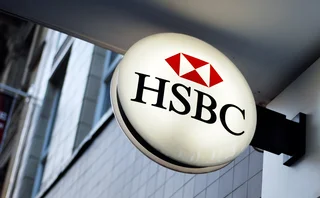
Inside Wells Fargo’s bid to take on big FX players
The third-largest US bank by assets plans to use big corporate flows to lure institutional clients

Being late to the party can have its perks. This is what Wells Fargo is discovering on its quest to rapidly scale up its foreign exchange business.
The firm is the third-largest US bank by assets, after JP Morgan and Bank of America. But when it comes to FX trading, Wells Fargo lags far behind – something the bank set out to rectify 18 months ago. Its goal is to double the size of its currency business within the next five years, mainly by bringing in more institutional clients.
One advantage of playing catch-up is much lower spending on technology, as its cost has fallen dramatically since the days when Wells Fargo’s peers were building out their FX market share.
“We really want to bring our FX offering up utilising best-in-class technology at a time when it’s much easier to get that payback on your investment,” says Ben Bonner, co-head of the macro division which is part of Wells Fargo’s corporate and investment banking arm and includes FX trading.
The bank is also making use of its ample experience outside of FX.
“We have the benefit today of being able to use the technology that we’ve stood up in other parts of our business, particularly algorithmic and particularly in our rates business, and utilise that and repurpose it in the FX business,” says Mark Jones, Bonner’s co-head.
The bank wants to become a major FX liquidity provider for institutional clients, and its large corporate client base in FX forms a big strand of that plan. Wells Fargo intends to algorithmically match flows from its corporate clients with institutional flows.
“We’ve learned [from the rates business] what’s required to be able to do that,” Jones says. “So it’s very, very doable from our standpoint. This is not a huge heavy lift, and we’re already starting to go live on some of that.”
He suggests that flows from Wells Fargo’s corporate clients might provide different offsetting opportunities compared with other liquidity providers: “We feel we can be very value-added to the market and, in some cases, very differentiated.”
We really want to bring our FX offering up utilising best-in-class technology at a time when it’s much easier to get that payback on your investment
Ben Bonner, Wells Fargo
One of the largest lenders in the US, Wells Fargo serves more than 10% of all mid-sized companies in the country. “We’re the biggest middle-market lender in the country in most [industry] sectors,” Jones says.

As it makes a bigger push into institutional FX business, Wells Fargo is also drawing on the relationships it has with institutional clients in rates and equities. Its primary goal is to capture more US institutional flows, although the new FX strategy is global and the bank is making staff changes around the world.
For example, in May Wells Fargo hired Rob Gomprecht as head of macro electronic execution sales, based in New York. Gomprecht joined from BCG Partners where he marketed the firm’s algorithmic trading platform, with a focus on institutional investors. He reports to James Wang, global head of institutional rates and FX sales at Wells Fargo.
Since launching the new FX strategy, Wells Fargo has recorded mostly quarterly rises in its fixed income, currencies and commodities revenue. The business line brought in $1.14 billion in the first quarter of this year, a 28% rise from the fourth quarter of 2019. The bank does not publish the figures specifically for FX.
In step with the times
As Well Fargo expands its FX business, both in-house and third-party technology come into play. The bank sees vendors as particularly suited to supplying FX execution algorithms that its sophisticated institutional and corporate clients – rather than the bank itself – can use, given the high quality and low cost of available vendor technology. Wells Fargo is currently looking at a number of such potential vendor partners.
Jones suggests there are other ways Wells Fargo could attract more FX trading clients.
“When you start thinking about the way the world is evolving technologically and how much banking is now getting conducted, for example, through mobile phones, we see huge opportunities over the next five years to work with all of our partners to try and embed FX more deeply into our customers and meet their needs,” he says.
Citi has picked up on a similar trend: mobile trading, available via the bank’s Velocity platform since 2012, rocketed during the Covid-19 pandemic last year.
By planning to match off FX client flows algorithmically, or automatically, Wells Fargo is tapping into a trading trend that has emerged over the past five years or so. It is also something the bank is already doing in its rates business.
The more alignment that you have between the electronic side of the business and the voice side of the business, that’s the recipe for success
Mark Jones, Wells Fargo
In rates, it internalises much of its trading – another dealer practice that’s growing in popularity.
Internalisation involves offsetting risk arising from transactions with one client against risk arising from trades with another client, rather than hedging on external markets. Around two-thirds of spot FX volumes globally are now internalised.

Internalisation benefits both the dealer and its clients as it reduces costs and stops information on the order leaking out to the market and moving the price, even though some worry it could eventually harm price discovery by draining too much volume from public venues.
Bonner and Jones hint at yet another advantage Wells Fargo can offer its trading clients – its traders’ ability to easily switch between voice and electronic trading as they see fit.
“Algorithms are fantastic … but ultimately the risk decisions that you make as a trading business come from market conditions, which are constantly changing,” Jones says. “So, the more alignment that you have between the electronic side of the business and the voice side of the business, that’s the recipe for success.”
Bonner adds that, at some of Wells Fargo’s peers, voice and electronic teams are “competing factions”, noting: “We’ve tried to keep those two groups aligned, unified and, really, one working to augment the other. That’s true in FX, that’s true in rates and it is true in other parts of our markets business.”
Jones sounds confident that Wells Fargo’s bid for a greater share of the FX market will succeed.
“In some cases, we are direct competitors with all of the bulge-bracket investment banks and, in some cases, we’re not – our business is more niche,” he says. “[But] increasingly, we are going to be competing more directly with them in FX.”
Editing by Olesya Dmitracova
Only users who have a paid subscription or are part of a corporate subscription are able to print or copy content.
To access these options, along with all other subscription benefits, please contact info@risk.net or view our subscription options here: http://subscriptions.risk.net/subscribe
You are currently unable to print this content. Please contact info@risk.net to find out more.
You are currently unable to copy this content. Please contact info@risk.net to find out more.
Copyright Infopro Digital Limited. All rights reserved.
As outlined in our terms and conditions, https://www.infopro-digital.com/terms-and-conditions/subscriptions/ (point 2.4), printing is limited to a single copy.
If you would like to purchase additional rights please email info@risk.net
Copyright Infopro Digital Limited. All rights reserved.
You may share this content using our article tools. As outlined in our terms and conditions, https://www.infopro-digital.com/terms-and-conditions/subscriptions/ (clause 2.4), an Authorised User may only make one copy of the materials for their own personal use. You must also comply with the restrictions in clause 2.5.
If you would like to purchase additional rights please email info@risk.net
More on Markets
HSBC loses FX forwards market share with EU funds
Counterparty Radar: UK bank reported 6% drop in notional volumes with Ucits funds in H2 last year
Franklin Templeton steps back into FX options
Former biggest user of the instrument among US mutual funds returns with $7.6bn of USD/JPY strategies
Equity vol convexity selling gains momentum
Risky hedging strategy is attracting interest but can investors learn from past convexity blow-ups?
Continued decline of the one-stop shop
Dealer Rankings 2024: Only two banks make the top 10 across all rankings tables – others have focused on vertical dominance
Often fluid. Not always liquid
Dealer Rankings 2024: On the buy side and the sell side, the make-up and depth of OTC mini-markets can change rapidly
The squeezing middle: data shows Europeans taking on US foes
Dealer Rankings 2024: Barclays, BNP Paribas and Deutsche grab bigger share of the pie
Cuts and points – how the Dealer Rankings work
Dealer Rankings 2024: We have a simple way to compare dealers. Sort of simple, anyway
Citi tops second edition of Risk’s Dealer Rankings
Dealer Rankings 2024: Data shows five big US dealers still lead, but with Europeans closing in







